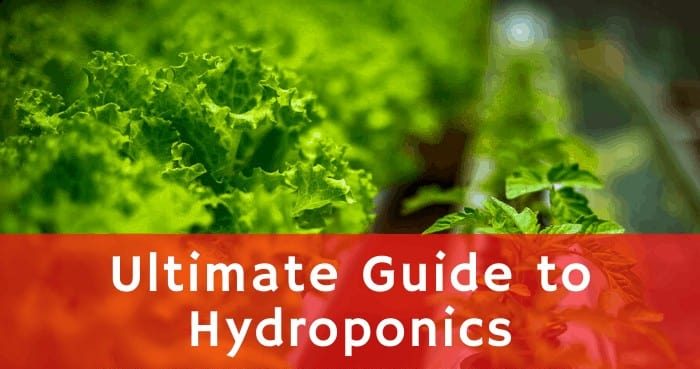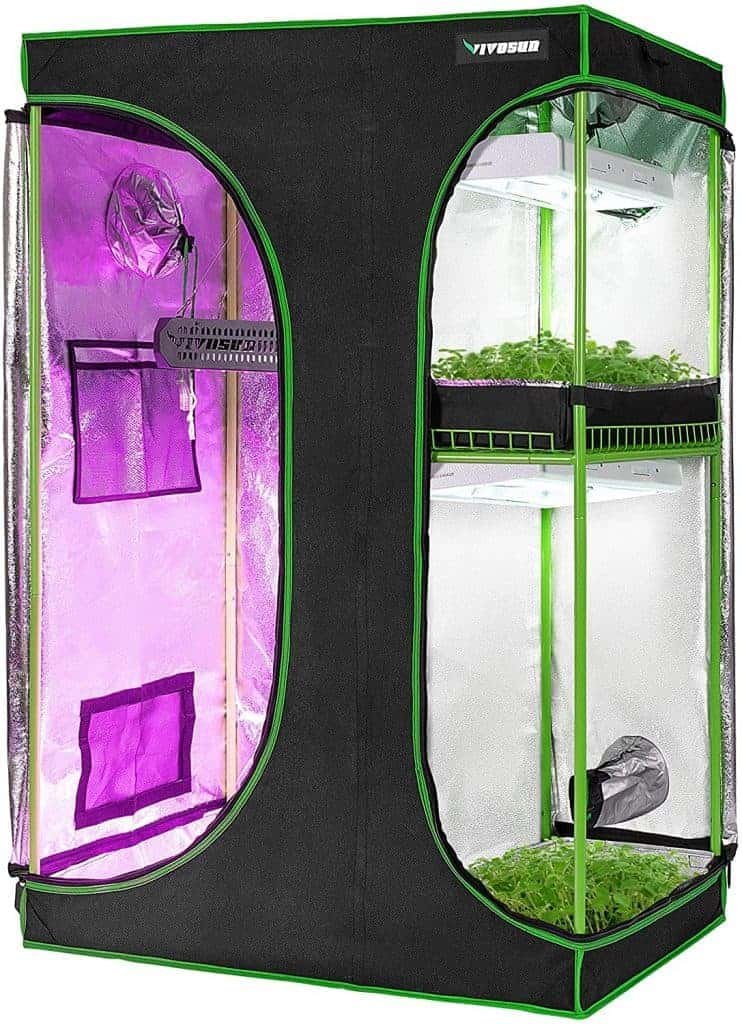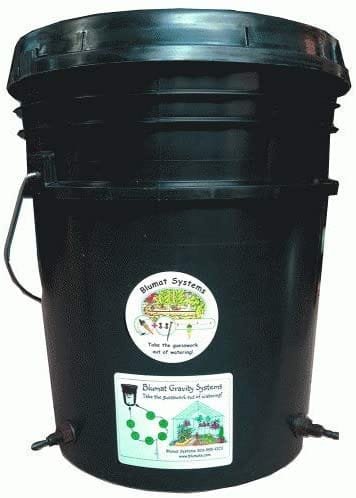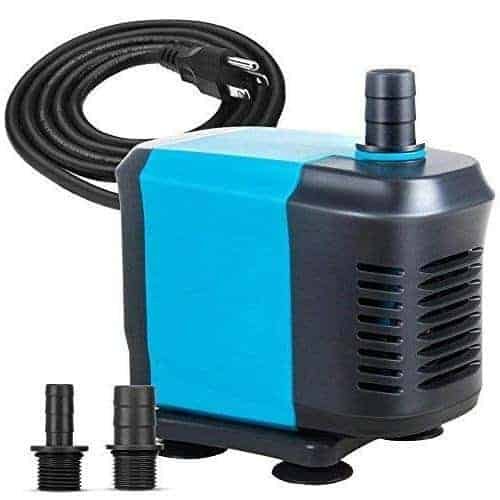The history of hydroponics farming can be traced back to 1627 with Francis Bacon’s work on water culture.
However, it was not until around 1929 when a University of California at Berkeley scientist, William Frederick Gericke began to publicly promote the use of solution culture in agricultural production.
The earliest large-scale success of hydroponic farming was in the 1930s on Wake Island, a rocky island in the Pacific Ocean used as a refueling station for Pan American Airlines.
Hydroponics farming techniques were used extensively in the soilless island to grow vegetables for airline passengers.
In this guide, you will learn what hydroponics are, the benefits, different systems, and also the tools you need to get started.
What is Hydroponics Farming
Hydroponics, by definition(Wikipedia), is a way of growing plants in a nutrient-rich, water-based solution. Under this technology, the use of soil is forfeited and instead, the root system is anchored by water or an inert medium such as rock wool, perlite, peat moss, clay pellets or vermiculite.
The basic principle behind the technology is allowing plant roots to come into direct contact with the nutrient-rich solution, while still being able to sufficiently access oxygen which is vital for healthy growth and development of the plant. In its simplest, hydroponics is gardening without soil.

Benefits of Hydroponics Farming
Hydroponic Farming is an ideal choice for any grower regardless of their scale of production. It is an excellent choice because it gives you the freedom to control and vary the factors that affect the growth of plants.
And truth be told, a fine-tuned hydroponic system will easily outdo a soil-based system in terms of yield, quality and the amount of space required to produce.
Politics and sentiments aside, if you are interested in growing the juiciest, yummiest and biggest plants in your neighbourhood, hydroponics will come in handy.
The whole undertaking might seem intimidating at the beginning but the end results are worth the money, time and effort.
The golden rule is to start small and be simple – then watch your system make your gardening dreams come true.
Advantages of hydroponics
If you are still not convinced, here are a few reasons you should consider starting a hydroponics garden.
- More yields – Hydroponics farming comes with many benefits, however, none of them is more prominent than the fact it increases the productivity of your plants. In a fine-tuned hydroponic system, plants will produce 30% more when compared to plants grown directly on the soil.
- Quicker growth -In a hydroponics farming environment, plants have the leverage to grow faster because they don’t have to work extra hard to reach nutrients. Even a small root system will sufficiently deliver enough nutrients to any plant. Therefore, plants are able to concentrate on growing upwards instead of expanding their root systems to reach deeper nutrients and water. Plants under this technology will grow 25% faster than oil-based ones.
- Water-saving -Since a hydroponic system isn’t open, it results in less evaporation. Plants are therefore able to utilize less water than soil-based ones making the technology environmentally friendly.
- Year-round production -With hydroponics, you’ve got control of the seasons. There are no longer limitations on when you can sow or harvest your plants since the whole system is in a controlled environment. Even when winter hits hard or summer burns itself out, they are guaranteed a bountiful harvest.
- No yard required -If you are not privileged enough to have a backyard where you can grow a few plants, it should come as a reprieve to know that it is possible to build a hydroponic garden indoors. You can transform that extra space in your house to a steady source of homegrown veggies and flowers.
- Less labor requirement – Hydroponics farming is capital intensive. This implies that they require less human labor. You do not have to weed the plants not forgetting that most systems are automated
Hydroponic Systems Overview
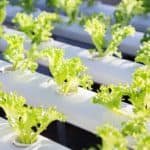
The good thing about hydroponics farming is its versatility. I mean, there is a wide variety of Hydroponics Systems to choose from. The decision here depends on your budget, needs, plants you want to grow and the space you are willing to give up for the project.
1. Deep Water Culture System
The Deepwater culture or the reservoir method is by far the simplest and easiest hydroponic system to set up. Under this system, roots are suspended in a nutrient-rich solution while an air pump oxygenates the solution to prevent the roots from drowning.
If you feel that this is the system for you, keep light from penetrating inside because it will encourage the growth of algae, which will eventually destroy your system.
The advantage of using this system is its low maintenance requirements. Unlike other systems, there are no spray emitters or drip lines to unclog.
This property makes it an ideal choice for organic hydroponics because the use of organic nutrients is susceptible to clogs and breakdowns.
Best Complete Deep Water Culture Systems
Follow the link to find more information on the Deep Water Culture System.
Also, check out best deep water culture kits reviews for more valuable information
2. Nutrient Film Technique
The Nutrient Film Technique is a type of hydroponic system where there is a continuous and steady flow of nutrients over the tips of plant roots. The system is slightly tilted so that the nutrient concentrate can flow by the force of gravity.
This way, plant roots are able to absorb more oxygen from the air than the solution. The technique is effective because plants are able to absorb more oxygen.
3. Aeroponics
Under this method, roots are suspended in the air then misted with a nutrient-rich solution. There are two ways nutrients can are sprayed on the roots.
The first method uses a spray nozzle to deliver nutrients. While the second one uses a pond flogger. If you opt for a pond flogger, ensure that it is Teflon coated. This will reduce its maintenance requirements.
If you are out for a good Aeroponics system, check out the AeroGarden. It is a commercialized Aeroponics system with very little setup requirements.
The system also comes with all the supplies and tools you need to get started.
4. Wick Hydroponics System
This is one of the most affordable and easiest hydroponics systems to have. The idea behind Wick Hydroponics System is having an absorbent material such as cloth surrounded with a growing medium such as peat moss or vermiculite then dipping one of its ends into a nutrient-rich solution.
The rich solution will then be wicked to your plants’ roots.
The system can be simplified by getting rid of the wicking material then replacing it with an anchoring medium that has the capacity to wick nutrients to your plants.
This can be accomplished by directly suspending the medium into a solution rich in nutrients. Keep away from mediums such as coconut coir and Rockwool because these can absorb too much of the nutrients and end up suffocating your plants.
5. Ebb & Flow System
This Hydroponics Farming system is also known as flood and drain and boasts as one of the most effective ways to grow a plant under hydroponics. The system is programmed to flood plant roots with a nutrient-rich solution at specific intervals. After some time, the solution seeps back to the reservoir awaiting the next round of applications.
The pump is normally connected to a timer. Therefore, the process repeats itself automatically.
This system is ideal for plants that require regular dry spells. Such plants flourish under regular dry periods because it allows them to grow deeper roots. As the root system becomes bigger, these plants are able to absorb more nutrients in very short periods of time.
6. Drip Irrigation System
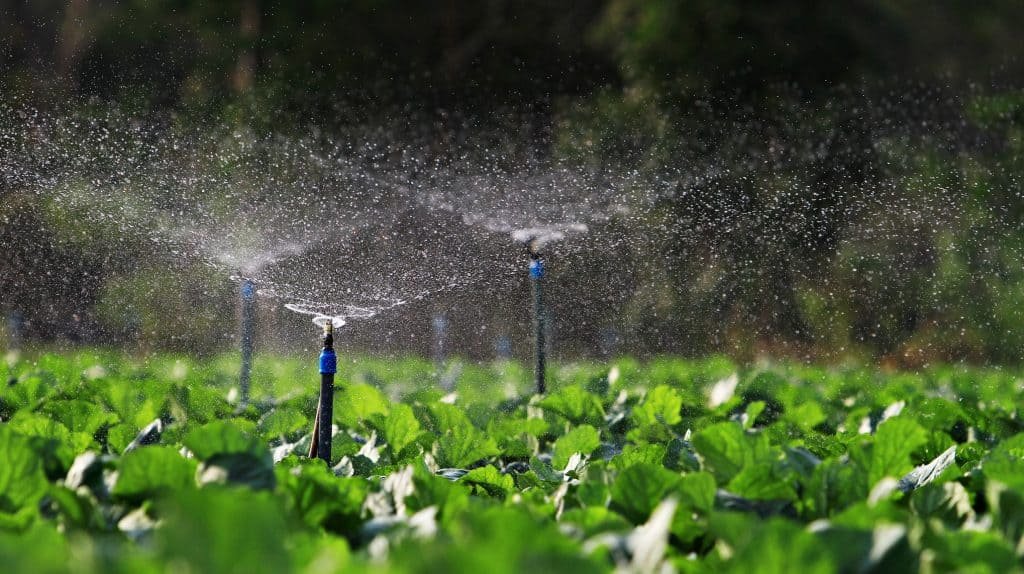
The drip irrigation system is simple. It works by slowly feeding a hydroponic medium with nutrients. If you decide to go for this system, go for slow draining mediums such as coconut coir, Rockwool or even peat moss. If these are out of your options, you can still stick with quick-draining mediums but be sure to use quicker drip emitters.
The only problem with drip irrigation systems is that they are prone to clogging. However, if clogging is not a bother to you, it is a cheap and effective hydroponic method to grow plants.
Must-Have Hydroponics Tools
If you are new to hydroponics, you will need tools to get you started. Although there are different types of hydroponic systems, the tools used are more or less similar.
The growing chamber is part of the hydroponic system where plant roots develop. In simple terms, it is the container that holds the roots, nutrient concentrate, and provides support to the entire plant.
Protect this chamber from direct sunlight and extreme temperatures since these can cause heat stress to the plants. If the growing chamber is exposed to high temperatures, plants will suffer from heat stress and end up aborting flowers and fruits.
The shape and size of this compartment will depend on the hydroponic system you are building as well as the plants you are looking forward to growing.
Plants with bigger roots will demand a big growing chamber while those with small ones will be contented with a small one. Options are endless and almost any container will make a good growing chamber.
However, it is advisable to keep away from anything metallic because most metals are prone to corrosion or will easily reach the nutrient concentrate.
If you can’t buy a commercial growing chamber, look around your homestead and you will be surprised by how many things you can transform into one.
However, if you feel that you need something commercial and stylish, here are a few growing chambers to take into consideration.
Check our best selling and reliable growing chambers
2. Reservoir
As the name goes, this is the part of the hydroponic system responsible for holding the nutrient concentrate. This solution is usually a mix of plant nutrients and water.
Depending on the choice of your hydroponic system, the nutrient solution can either be pumped from the reservoir into the growing chamber in timed cycles or continuously.
In other systems, the reservoir also functions as the grow chamber, allowing plants to suspend their roots in the nutrient concentrate 24/7.
You can fashion a reservoir out of anything that holds water as long as there are no leaks and it can hold enough water for the plants you want to grow. It also has to be light proof to prevent sunlight from penetrating.
If the container you have is not light-proof, there are many ways of making opaque. You can paint it, cover it or wrap it with an opaque material. The idea here is to prevent algae from growing in the container. If you are not the DIY type, commercial reservoirs are also available.
Most systems have a submersible pump that is responsible for pumping the nutrient-rich solution from the reservoir into the root zone or growing chamber.
They are available at hydroponic shops or home improvement stores that deal with garden supplies. These pumps are available in a wide array of sizes. The option here depends on the size of your project.
Submersible pumps are nothing more than impellers that use electromagnetic fields to spin and pump water. They are easy to maintain. Most of the time you only have to clean the filter. And if yours never came with one, make one easily by cutting a piece of the furnace filter that seamlessly fits the pump.
The filter and the pump need frequent cleaning to ensure that the flow of nutrients is never obstructed.
4. Delivery system
A delivery system isn’t more than what its name suggests. Its role is to deliver nutrients directly to the plant roots. The whole concept is very simple and highly customizable to fit any hydroponic system.
A normal delivery system will consist of standard PVC tubes and connectors, black or blue vinyl tubing and garden irrigation tubing connectors.
Depending on the choice of your hydroponic system, you can opt to use sprayers and emitters as part of your nutrient delivery system. Though these will be useful, you should be prepared for frequent clogging as a result of nutrient build-up. Try avoiding them as much as possible.
5. Timer
Not all hydroponics farming systems require a timer to operate. The question of if to use or not use a timer will be answered by the nature of the hydroponic system you are building and its location.
If your system is going to be indoors where you have to use artificial lighting, you will need a timer to turn the light system on and off. For drain, flood, Aeroponics and drip systems, a timer controls the submersible pump.
However, some versions of Aeroponics will require special timers to work efficiently. Some of the best timers under this category include:
Though standard pump and light timers work well, it is highly advisable to go for a timer that is rated 15 amperes instead of 10. 15 amp timers are often heavy duty and have a cover that protects them from the water.
Just check the back of the package to make sure you have made the right choice.
Unless you have a battery backup, digital timers are not recommended over analog ones simply because they lose all their data once unplugged from a power source.
Analog timers also have more actual on and off settings. Be sure to check that your timer has pinned all around the dial to avoid regrets.
For your reference, you can check top-selling hydroponic timers on amazon by clicking the link below.
6. Air Pump
Though not compulsory in all hydroponic systems, air pumps come with numerous benefits. They are also relatively inexpensive and widely available in stores that sell aquarium supplies.
Their role is to ensure a steady supply of oxygenated air to the water and roots in the growing chamber. They pump air through airlines into air stones which created bubbles that bubble up through the nutrient-rich solution.
In a water culture hydroponic system, an air pump will prevent the roots from drowning in the solution since they are suspended in there 24/7. For other hydroponic systems, air pumps are fitted in the reservoirs to keep the water oxygenated and also increase the levels of dissolved oxygen in the water.
Using air pumps also keeps the nutrients and water in constant circulation. This ensures that the nutrients are evenly distributed at any given time. Supplying oxygen in the water also discourages the growth of microbes and pathogens.
7. Grow Lights
Grow lights are an optional part of hydroponic systems. Depending on where you plan to put your hydroponic system and grow your plants. You could choose to either use natural sunlight, or artificial light to grow your plants with. If you can make use of it we prefer natural sunlight, it’s is free and doesn’t require any extra equipment.
However, if there just isn’t enough natural sunlight where you put your hydroponic system, or at that time of year, you’ll need to use at least some artificial light to grow your plants.
Note that grow lights are not similar to your standard household bulbs. They are designed to emit specific color spectrums that mimic natural sunlight.
Plants use these color wavelengths (spectrums) to photosynthesize. Photosynthesis is vital in the process of flower and fruit formation.
Therefore, the type and intensity of sunlight a plant gets by large, impacts its ability to photosynthesize.
This is basically where the plants grow in. the growing medium is responsible for providing physical support to the plants. Think of it as soil, only that in this situation it is inert.
Different hydroponic systems will demand different types of growing mediums. For instance, in an Aeroponics system, the growing medium is air while other systems use Rockwool, peat moss or lava stone.
All in all, a good growing medium should have the capacity to retain moisture, in such a way that water doesn’t have to be applied minute after minute.
9. PH Test Kit
For plants to thrive in a hydroponic environment, the PH level has to be balanced. A PH test kit will help you determine if the PH level of your nutrient solution is optimal. If it is too low, Olivia’s pH Adjuster Up’ will help bring it up and if too high Olivia’s pH Adjuster Down’ will help bring it down.
Starting Your First Hydroponic Garden
Now that you’ve learned too much, it’s time to fold up the sleeves, put on some gumboots and start growing. Planning for your hydroponic garden isn’t any different from the traditional soil garden. A little pre-planning will mean less trouble throughout your growing season. And here’s how to get started in 7 simple steps.
1. Decide What to Grow
The first thing when starting a hydroponic garden is determining what you want to grow. This will help you choose the best hydroponic system, the amount of space available and the best light source. Different hydroponic systems will work better with different types of plants.
If this is your first time using hydroponics, it is advisable to start with a less demanding crop like lettuce. However, bear in mind that different plants will perform better under different climatic conditions. Do your homework and determine the best crops to plant in your geographical location.
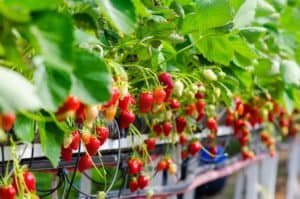

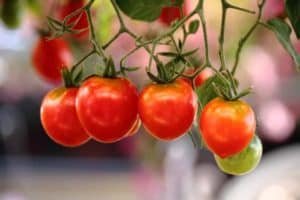

2. Select an ideal Hydroponic system
After deciding on the plants you want to grow, you will be in a better position to choose an ideal hydroponic system. Apart from the type of crops to grow, there are also other factors to be taken into consideration. Your budget, the number of crops to grow and the space available will all come handy in choosing an ideal hydroponic system.
3. Choose a light source
Adequate sunlight is an important factor in determining the success or failure of your garden. If sunlight is not an option for you, you’ll have to provide light for your plants using artificial grow lights. If this is the case, you have to choose the right to grow light for your hydroponic system. Several factors should also be taken into consideration. For example, the coverage area, light intensity, and cost. If you are high-quality produce, go for the sun and if you can’t, stick with artificial light.
4. Choose a growing medium
Unlike in a soil garden, you have to determine the best growing medium to use in your hydroponics garden. The type of the medium will depend on the crops you are planning on growing and the system itself. Like we have seen, several types of grow mediums exist. When choosing one, the following factors should be taken into consideration. PH stability, water retention, cost, and aeration.
5. Buy the right additives and hydroponic nutrients
Different types of nutrients are available in 1, 2, and 3 part systems. If you are a beginner or not yet familiar with hydroponics, it is advisable to stick with a 1 part nutrient like Dyna–Gro Bloom and Dyna–Gro Grow.
If you are a veteran with some knowledge of hydroponic plant nutrients 3 part series nutrients are perfect for general hydroponics. Most companies will have a feeding schedule on their websites. So be sure to check them out.
There are also additives that will help you in sterilizing your hydroponic system, improving the taste of your products and boosting their growth rate. Think of them as multivitamins in human beings. Though not necessary, they will help you increase your yield.
6. Buy a PH meter
Plants will only absorb nutrients at a certain PH level. Therefore, you need to regularly test the PH of your concentrate solution. There are several options when it comes to measuring PH. You can buy test strips, liquid kits or even electronic meters. I prefer electronic meters because they are convenient and inexpensive.
Don’t forget to buy a PH down and PH up solution set to adjust the PH of the nutrient solution accordingly. Most of the time, you will be using the PH up
7. Start your seeds
Once you have your system all set up, and all the supplies for the growing season are in store, it is time to sow your seeds. If you can, gather your supplies before in advance to avoid delays. When starting seeds, it is advisable to use a rapid rooter then placing it in a dome-shaped greenhouse for the seeds to sprout. Seedlings can be left in the tray until they have attained enough root system to be transplanted into the growing chamber of the hydroponic system.
You can check out starter seed kits on amazon
Useful Hydroponics Farming Tips
Keep the following in mind when doing Hydroponics Farming:
- It is strongly recommended that you change your nutrient solution every 2 or three weeks.
- Water temperatures in your water reservoir should be between 65 and 75 degrees. Temperatures can be maintained by using a water chiller or heater.
- Using an air stone pump will help in oxygenating your nutrient solution to reduce the risk of plants drowning
- If your plants look discolored, unhealthy or stunt, check the PH level and adjust it. If the PH level is okay, flush the entire system with a detoxifying solution like Clear.
- After every growing season, clean and sterilize the whole growing system. Get rid of any debris and flush the entire system with a mix of non-chlorinated water.
- Since a hydroponic system isn’t open, it results in less evaporation. Plants are therefore able to utilize less water than soil-based ones making the technology environmentally friendly.
Final Words
As we come to the end of this growing guide, it is my hope that you have learned a thing or two regarding hydroponics. With this knowledge, nothing can stop you from enjoying fresh homegrown veggies and flowers. Until next season, I wish you all the best in your growing endeavors.
You can check the best starter hydroponic kits on amazon by going on the link mentioned below.

